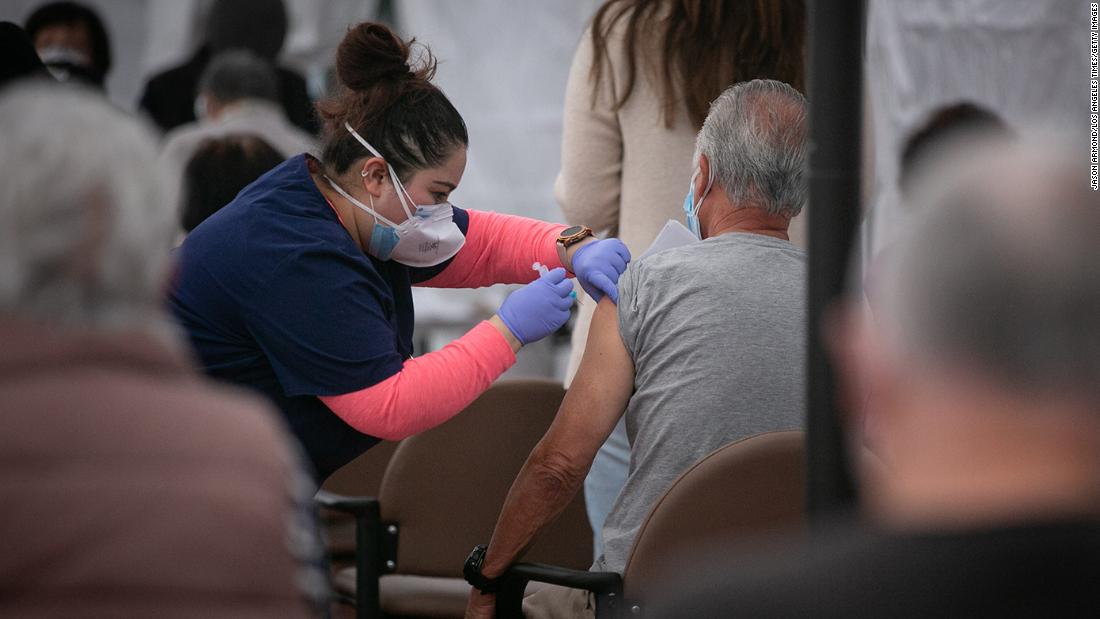“Two factors, however, can slow down or even reverse the declines that have already started,” said the IHME team.
Another important factor, according to the IHME team, is “the increase in behaviors that favor the transmission of Covid-19”.
CNN medical analyst Dr. Leana Wen said on Sunday that the drop in numbers is good news. “But I am also very concerned about these variants, because we have seen in other countries what happens when there is an explosive spread of these more contagious variants,” said Wen in CNN’s “Inside Politics”.
“I think it’s very important for us to increase vaccinations as much as we can and, in the meantime, do our best to continue masking, physical detachment – those other measures that we know are really important in controlling the spread of infection.”
In addition to variant B.1.1.7, the CDC said on Sunday that 17 cases of the B.1.351 Covid strain initially seen in South Africa were found in seven states and in Washington, DC. There are also two cases of the P.1 strain initially linked to Brazil – one in Minnesota and one in Oklahoma – he said.
The agency said the data does not represent the total number of such cases circulating in the United States, but only those that were found through positive sample analysis.
The debate continues on the reopening of schools
Walensky acknowledged that “many” counties remain in the red zone. Schools in red zones should follow a hybrid model if they are in elementary education, she said, while elementary and high schools will continue with virtual learning or a hybrid model if they are able to adhere to strict physical distance.
Meanwhile, Dr. Wen said she found the CDC’s guidance “good and problematic”.
She liked that the guidelines specifically defined transmission levels so that certain mitigation measures could be implemented. But she questioned other aspects, including the fact that vaccinations are not listed as a “key” strategy for reopening schools. She did not understand why the matter was up for debate.
“If we want students to attend school for face-to-face learning, the least we can do is protect the health and well-being of our teachers,” said Wen, “especially since in some parts of the country, teachers are already being forced to go back to school in tight and poorly ventilated areas, with many students who are not always masking and practicing physical distance. ”
Walensky noted on Sunday that guidance from the CDC vaccine advisory committee places teachers in the Phase 1B category for vaccinations.
“I am a strong advocate for teachers who receive their vaccines,” she said, “but we do not believe that it is a prerequisite for the reopening of schools.”
‘One step closer to winning the war’
Despite lingering concerns, officials are hopeful that the continued surge in vaccines is starting to turn the course of the pandemic in a positive direction.
The IHME expects 145 million adults to be vaccinated by June 1, it said in a statement, which would prevent 114,000 deaths.
“Our vaccine supply is increasing, the rate of positivity is decreasing and we are getting closer and closer to winning the war against COVID,” New York Governor Andrew Cuomo said in a statement on Saturday, referring to vaccinations of New York.
On Sunday, the state administered 89% of the first dose of vaccines it received from the federal government and 83% of the first and second doses, the governor’s office said.
In California, authorities have announced that millions of people will be added to the list of vaccination priorities, including residents “at high risk with developmental disabilities and other disabilities” and residents with serious underlying health problems. The plan, which will begin in mid-March, extends the age of eligible individuals from 65 to 16 to 64 in those categories.
A new challenge for the weekend
Some parts of the United States this weekend are facing another challenge that is delaying vaccinations: the winter climate.
Federal officials expect shipments of the Covid-19 vaccine to Texas to be delayed this week because of a severe winter storm, said Texas Emergency Management Division chief W. Nim Kidd.
“Our vaccines, which are due on Sunday, Monday, are unlikely to arrive until Wednesday, Thursday,” said Kidd on Saturday, “so we will see delays in getting the vaccine to the state.”
Some local outdoor vaccination facilities also closed before the storm, added Kidd, although administration of indoor vaccination continues “as long as it is safe to drive there.”
Alabama Governor Kay Ivey declared a state of emergency on Sunday, ahead of the predicted winter. The state of emergency will include 28 counties, according to a press release from Ivey’s office.
“If time permits and the roads remain safe, Alabamians who have plans to receive the Covid-19 vaccine should do so,” the press release said.
Vaccine providers in the state ordered about 170,000 doses this week, but the state has allocated only about 92,000, the department said in a press release. The difference was likely because last month some providers used doses of vaccines as starting doses when second doses were due.
Unfortunately, this means that a portion of the first available doses this week will need to be used to complete the two-dose regimen for these individuals.
Michael Nedelman, Lauren Mascarenhas, Elizabeth Cohen, Melissa Alonso Rebekah Riess, Hollie Silverman, Stephanie Becker, Cheri Mossburg, Kristina Sgueglia and Evan Simko-Bednarski contributed to this report.
